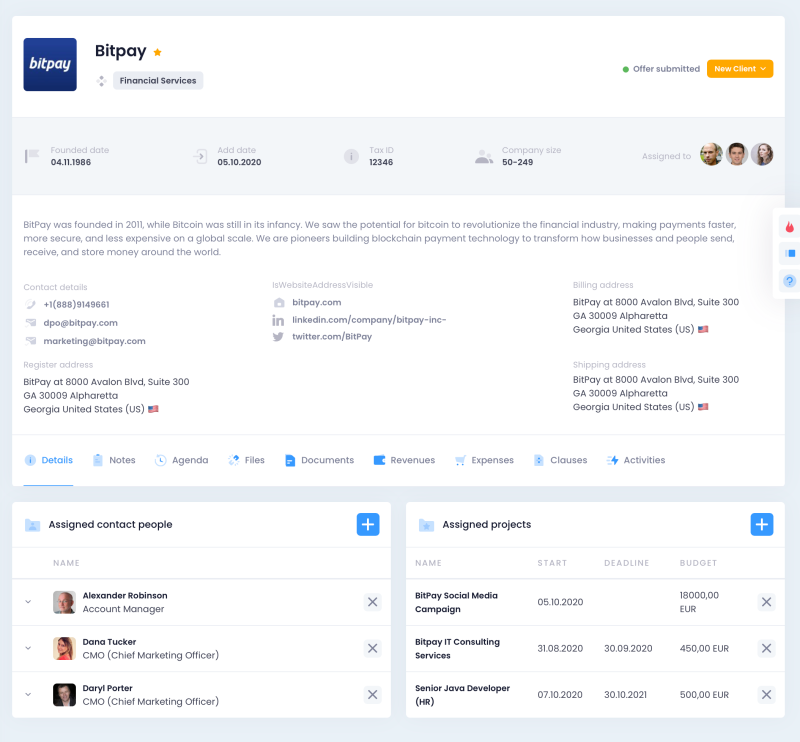Team leaders usually become (or at least should become) people who have exceptional skills – primarily inspiring and motivating others. However, the role of a leader is much more than just getting people to act, but also, among other things, managing tasks, creating a harmonious atmosphere or building relationships with subordinates, which affects not only the team but also the organization as a whole. Identifying a leadership style can help ensure high performance in this area. Below, we explain what this process is and why it’s worthwhile, as well as the 3 best ways to do it.
Identify your leadership style – table of contents:
What is a leadership style?
This term is used to describe a person’s characterizing approach, behavior and traits as a leader – in the context of managing people or an organization. It describes how, among other things, he makes decisions, sets goals, motivates subordinates and resolves conflicts. It is most often distinguished based on two dimensions: task orientation (focus on achieving goals) and relationship orientation (concern for the well-being of team members), leadership style is distinguished within this division:
- democratic (participatory) – the leader has a high level of both task and relationship orientation so that he consults with his subordinates before making decisions,
- authoritarian (directive) – the leader has a high level of task orientation and a low level of relationship orientation, which means that he makes all the decisions and assigns tasks to subordinates to perform,
- non-interventionist (so-called laissez-faire, laissez-faire, delegationist) – the leader has a low level of task orientation and a high level of relationship orientation, thus giving subordinates a lot of freedom in decision-making and task implementation.
Why identify a leadership style?
Carrying out this process is essential from the point of view of the leader, team and the organization as a whole. Learning about their management helps leaders understand their strengths (and sometimes their weaknesses) and identify areas for development. This allows for the improvement of their skills which in turn increases their effectiveness.
This is because this type of recognition helps to adapt their behavior to the needs of individuals and the situations at hand. What’s more, in this way, a leader can demonstrate behavior that motivates and engages subordinates too.
Step-by-step identification of leadership style
Identifying your leadership style is an important step in your development as a leader and can help you better understand the approach you have to managing both people and situations (especially crises).
In the next step, you will be able to adjust your behavior to increase your team’s motivation and consequently achieve the results you want. However, how should you assess and organize your behavior style? The 3 best ways to do so are outlined below.
- Conduct a self-assessment
- Get to know the opinions of others
- Analyze your behavior at work
To identify your leadership style a good place to start is to consider your preferences for managing others. Do you often make decisions on your own, or do you prefer opinion gathering and consultation? Do you try to control even the smallest aspect of every situation or do you provide empowerment to your team members? Do you show an attitude of understanding and empathy toward your employees or do you not try to put yourself in their shoes?
These are just some of the questions to learn about your attitude and behavior. Several tests and questionnaires are available on the market that can help you discover the answers (an example test is this one from idealist.org).
To identify your leadership style, it’s also a good idea to ask for feedback from those around you – co-workers, managers or subordinates. Do they consider you an autocratic leader who independently makes decisions or a democratic one who involves others in the process?
Each of these people may have a different impression (depending on the situation in which they interacted with you as a leader), but by juxtaposing these opinions with your self-assessment, you can look at your conclusions more critically. You might also take advantage of consultations offered by business coaches, who, as outside observers, can help you analyze this issue.
What are your favorite ways to motivate subordinates? How do you decide in everyday situations? Are you willing to delegate tasks? How do you resolve conflicts and respond to crises? These are the kinds of examples you need to focus on when observing your attitude at work (preferably in varied situations) – looking at both the short and long term.
By carefully observing your behavior, you can best identify the leadership style that characterizes you. As a next step, you should conduct an effectiveness analysis to determine whether your behaviors are leading to the desired results.
How can Firmbee help you?
Firmbee is a project and team management tool. As a leader, you can conveniently write out goals, deadlines, priorities, and project tasks (and delegate them to individual employees) and communicate with your team. The tool can therefore be a starting point for conducting an analysis of your behavior and decisions made, as well as your communication style.

Identification of leadership style – summary
Identifying your leadership style is a process that will enhance your insight into the workings of your mind which will translate into the ability to properly adapt your behavior to a specific situation and thus build the right relationship with your subordinates.
However, mere recognition (through the means listed above) is only the initial step. The next one you have to start thinking about how you can develop in the area of management and strengthen your skills your behavior in a specific situation. After all, there is no single best pattern to follow – the best way is the one that is appropriate for the situation and the members of a particular team.
If you like our content, join our busy bees community on Facebook, Twitter, LinkedIn, Instagram, YouTube, Pinterest, TikTok.
Author: Nicole Mankin
HR manager with an excellent ability to build a positive atmosphere and create a valuable environment for employees. She loves to see the potential of talented people and mobilize them to develop.


















